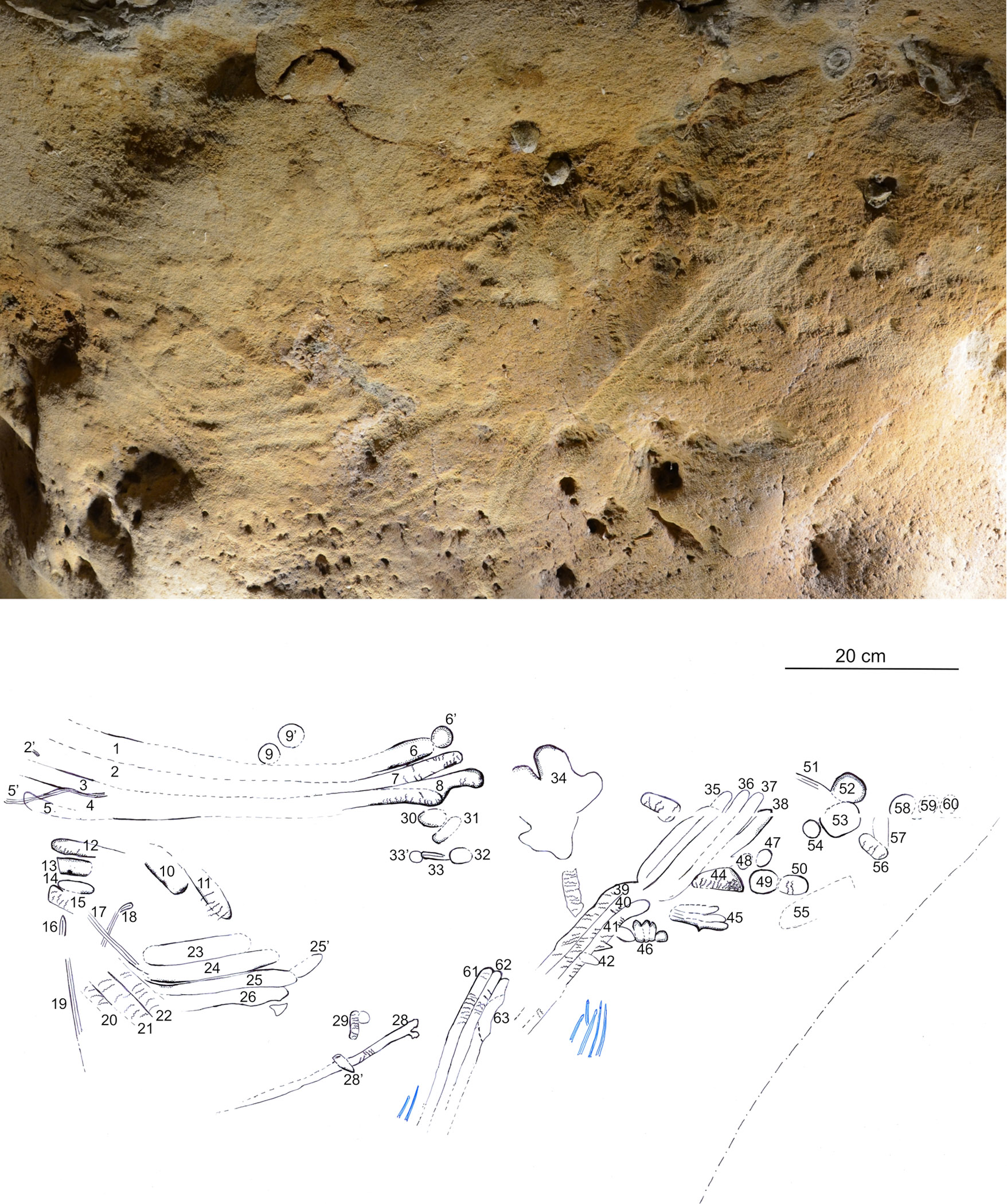The oldest known Neanderthal art found after 57,000 years sealed in a cave
Over 57,000 years ago, a group of Paleolithic humans stood in a cave beneath the French countryside, pressing their fingers against the rock, dragging them against the soft, chalky rock of the cave, turning it into a living canvas. The story they were trying to tell is unknown, but this discovery marks the oldest Neanderthal art that humanity has ever discovered.
A new study on the cave drawings has been published in PLOS One, detailing more about the engravings as they appear in the cave. The cave where researchers found the drawings is located beneath the countryside in Loire Valley, France. The new study analyzed the markings and compared them with other markings found around the world.
Not only did they determine they were made by human hands, but they used sediment layers to determine that the cave’s opening had been buried for at least 57,000 years and as long as 75,000 years ago. This was long before what scientists refer to a Homo sapiens arrived in that part of Europe. This find, as well as the distinctive Neanderthal tools found throughout the cave, identify the art as Neanderthal in nature.
This kind of evidence is not only intriguing because it showcases our oldest discovered art from these people, but it also helps combat stereotypes that Neanderthal people were dim and stupid. These complex markings clearly had a purpose, though it is difficult for us to save exactly what that purpose might have been, or exactly what story they might have been telling.
The cave with the drawings was first uncovered in 1846 when quarries in the area revealed it. The cave was properly excavated several years later in 1912, when an array of stone tools and charred bones of bison were found inside, revealing that Paleolithic hunters had once frequented the site. Researchers didn’t see the Neanderthal art until the 1970s.
Now, it’s taken another several decades to accurately determine when those drawings were probably made. Ultimately, the researchers say the images weren’t made for us, which makes it hard to understand exactly what they mean, or even if they could offer diverse and multiple functions in the society that is responsible for them.
Understanding human evolution is an intriguing scientific pursuit, and these drawings only add more data to the information we have about how various human-like species roamed our planet.
Over 57,000 years ago, a group of Paleolithic humans stood in a cave beneath the French countryside, pressing their fingers against the rock, dragging them against the soft, chalky rock of the cave, turning it into a living canvas. The story they were trying to tell is unknown, but this discovery marks the oldest Neanderthal art that humanity has ever discovered.
A new study on the cave drawings has been published in PLOS One, detailing more about the engravings as they appear in the cave. The cave where researchers found the drawings is located beneath the countryside in Loire Valley, France. The new study analyzed the markings and compared them with other markings found around the world.
Not only did they determine they were made by human hands, but they used sediment layers to determine that the cave’s opening had been buried for at least 57,000 years and as long as 75,000 years ago. This was long before what scientists refer to a Homo sapiens arrived in that part of Europe. This find, as well as the distinctive Neanderthal tools found throughout the cave, identify the art as Neanderthal in nature.

This kind of evidence is not only intriguing because it showcases our oldest discovered art from these people, but it also helps combat stereotypes that Neanderthal people were dim and stupid. These complex markings clearly had a purpose, though it is difficult for us to save exactly what that purpose might have been, or exactly what story they might have been telling.
The cave with the drawings was first uncovered in 1846 when quarries in the area revealed it. The cave was properly excavated several years later in 1912, when an array of stone tools and charred bones of bison were found inside, revealing that Paleolithic hunters had once frequented the site. Researchers didn’t see the Neanderthal art until the 1970s.
Now, it’s taken another several decades to accurately determine when those drawings were probably made. Ultimately, the researchers say the images weren’t made for us, which makes it hard to understand exactly what they mean, or even if they could offer diverse and multiple functions in the society that is responsible for them.
Understanding human evolution is an intriguing scientific pursuit, and these drawings only add more data to the information we have about how various human-like species roamed our planet.
